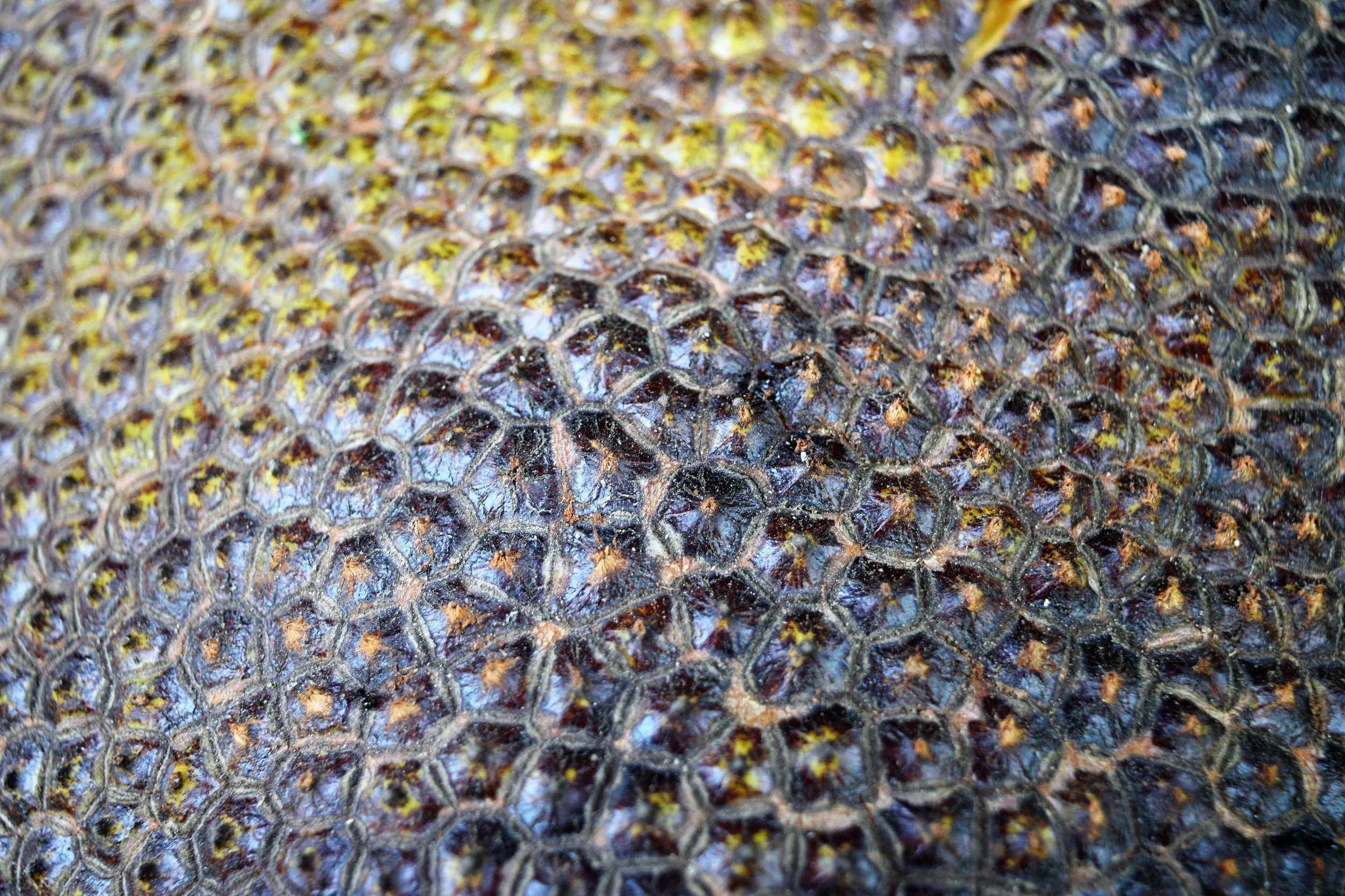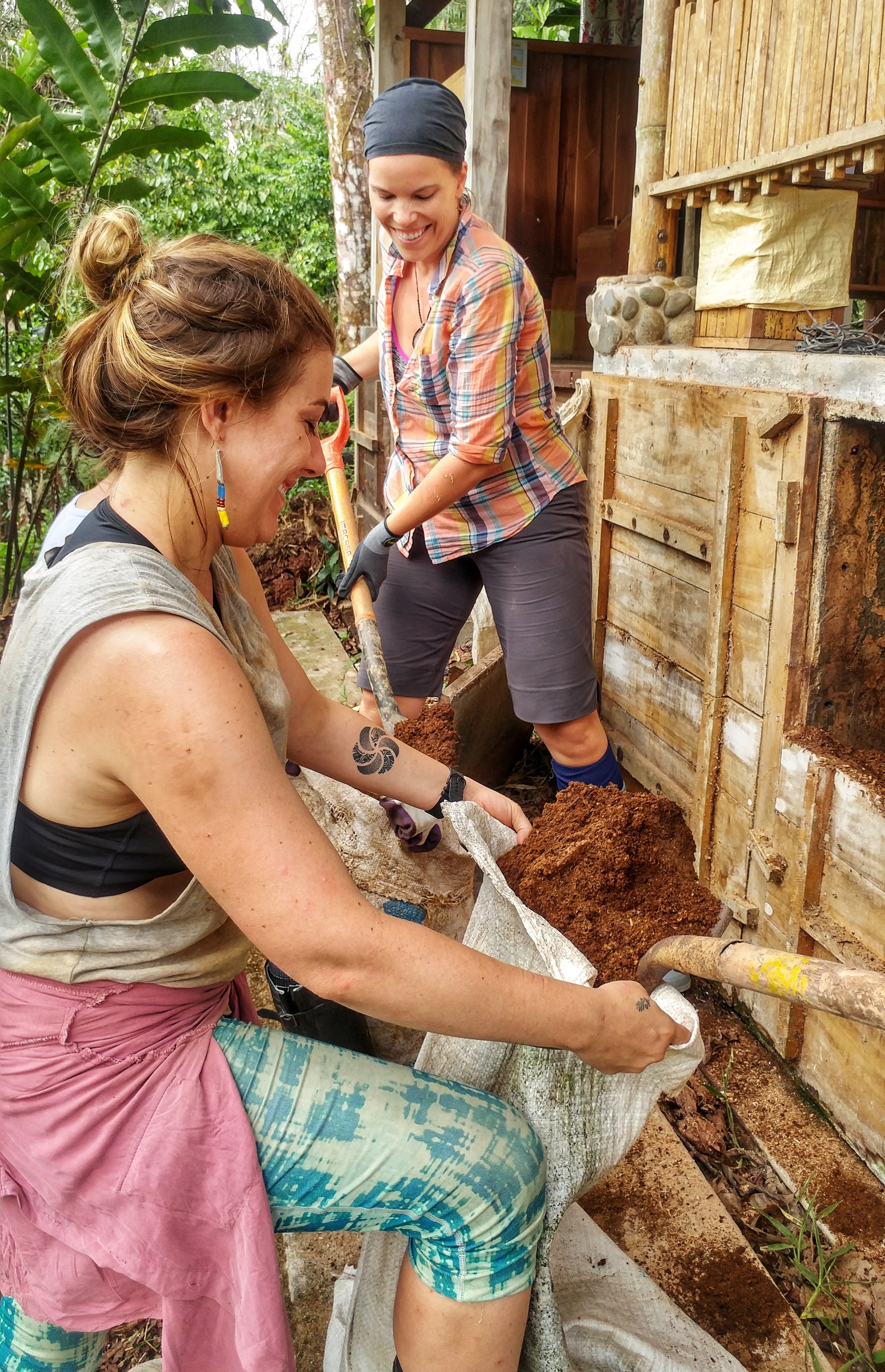Making Compost 101
By 2022 apprentice Joshua Wright
Smelly, sticky, messy.
Perhaps these are some words to describe your experience with food waste. But it doesn't have to be! Enter the world of composting!
In permaculture we love composting and would never think about just throwing away our food scraps into the trash, because they aren’t waste, they are resources that will benefit our garden and our planet.
Composting is a great way of dealing with your kitchen scraps, autumn leaf litter and/or lawn trimmings, along with any other organic matter that may be in your garden. Dealing with a “waste” product and turning it into something beneficial. In permaculture we also call this stacking functions.
An apprentice flipping our compost pile
What is compost?
Compost is broken down, decomposed organic matter. It occurs naturally in the environment around us as living things decay. Through human interaction this natural process can be sped up.
Why should you be making compost?
Composting has several great benefits:
It improves soil health. Adding organic matter into soils allows them to better retain moisture leading to reduced irrigation costs. It lends itself to better aerated soils reducing the need to till and it provides habitat for beneficial fungi and micro-organisms to continue the work of decomposition and nutrient cycling.
It provides plants with nutrients essential for their growth. The main elements plants need are Nitrogen (N), Phosphorus (P) and Potassium (K), all of which are present in compost, along with a number of other elements in trace amounts such as Calcium (Ca), Magnesium (Mg), Iron (Fe) and Zinc (Zn).
Composting diverts waste from ending up in landfills and the incinerator. Both of these require lots of energy and resources to maintain and manage, so by composting you are freeing up time, money, and energy for better utilization elsewhere (building an abundant, regenerative future we can be proud of).
When in landfills food waste doesn’t have access to oxygen, becoming anaerobic. When decomposing in this airless environment it produces methane and carbon dioxide. When not in balance with natural cycles these gasses contributes to greenhouse gas overload in our atmosphere adding to our global climate crises.
In summary by composting not only are you doing less bad (by producing less pollution) you are actively doing good (building soil which is essential for a healthy planet)! Win, win!
So how do we go about getting started?
Our little wigglers that we use for our vermicompost!
First, let’s identify the best location: Ideally you will have a spot in your garden that is out of direct sun and protected from the rain. You will need something to contain the compost in. A wire cage or recycled wood pallet box will both work great. But you can use any containment method that is roughly 1m^3 and allows air to circulate. If you are limited in space or don’t have a yard, there are many great DIY options, such as a plastic bin with holes drilled out. Or check out vermicompost, which uses worms to help you out! Check out this blog article from Mother Jones to learn more about using worms to compost in a small space.
Next let’s look at what goes into your compost: We can break this down into two basic categories: "greens" and "browns". "Greens" are materials that contain higher quantities of nitrogen and "browns" contain higher quantities of carbon. Balancing this ratio of greens to browns is what will define the success of your compost operation.
This ideal ratio being 25-30 parts carbon to 1 part nitrogen.
Examples of “greens” are kitchen scraps or fresh lawn clippings. “Browns” can be dried leaves, wood chips, saw dust, etc.
Remembering that there is carbon in ALL organic material including materials that we classify as “green”, we can achieve our ideal ratio (25-30:1) by adding roughly 2 parts “brown” material to 1 part “green” material.
If your compost pile starts to smell, attract flies or is excessively wet add more browns, if it is too dry reduce that amount of brown material you add.
Your compost should have the same moisture content as that of a damp sponge. When squeezed firmly no more than a few drops should come out.
Excellent!
Armed with these basics outlined above you are ready to begin your journey into the underworld (soil).
Keep in mind that there is no teacher out there as good as direct experience so get your hands dirty and have fun with it.
One day, we too, shall be compost. And so closes the circle of life.
Emptying out one of our compost toilets
Other Related Blog Articles
Transforming Human Waste into Fertilizer: Compost Toilets
5 “Grow Your Own” Mulch Plants
Learn More
Join us for one of our educational workshops about permaculture design, natural bulding, fermentation, and more. Check out our yearly workshops here.




